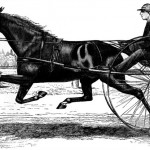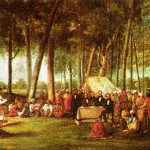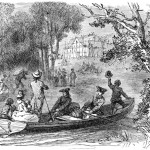Nestled within Lagrange County, Shipshewana, Indiana is the third largest Amish and Mennonite community in the United States. The Amish are a Christian religious denomination characterized by simple dress and lifestyle. Hailed as “the heart of northern Indiana Amish country,” Shipshewana lies in the core of the St. Joseph River Valley.
Hundreds of years ago, Potawatomi tribes were settled in the area. Traditionally hunters and fishermen, Potawatomi were also able to cultivate the fertile land, and live comfortably. That era came to an end in 1803, when Thomas Jefferson took control of the valley through the Louisiana Purchase.
Militiamen soon came to the settlement and drove out more than eight hundred Potawatomi in what has come to be called the “Trail of Death.” The Chief of the Potawatomi, known as “Shuw a wah no,” or Shipshewana was among those forced to leave.
Attracted by the promise of inexpensive land, Amish settlers encroached on the area, assembling a small town only a few miles south of where the Potawatomi had been.
Starting with a blacksmith shop, a church, a post office, and a sawmill, the settlers quickly expanded the town and erected buildings. In 1888, the first train bustled through Shipshewana, giving the town its official title.
Shipshewana today takes up less than one square mile of land, but its many Amish-owned and -operated businesses highlighting traditional crafts and culture attract more than fifty thousand visitors yearly.






















